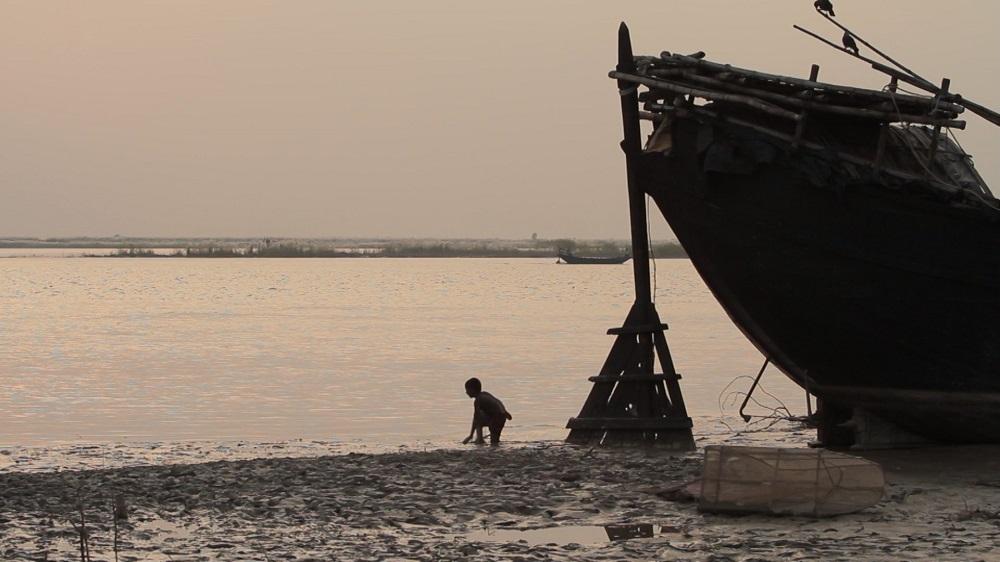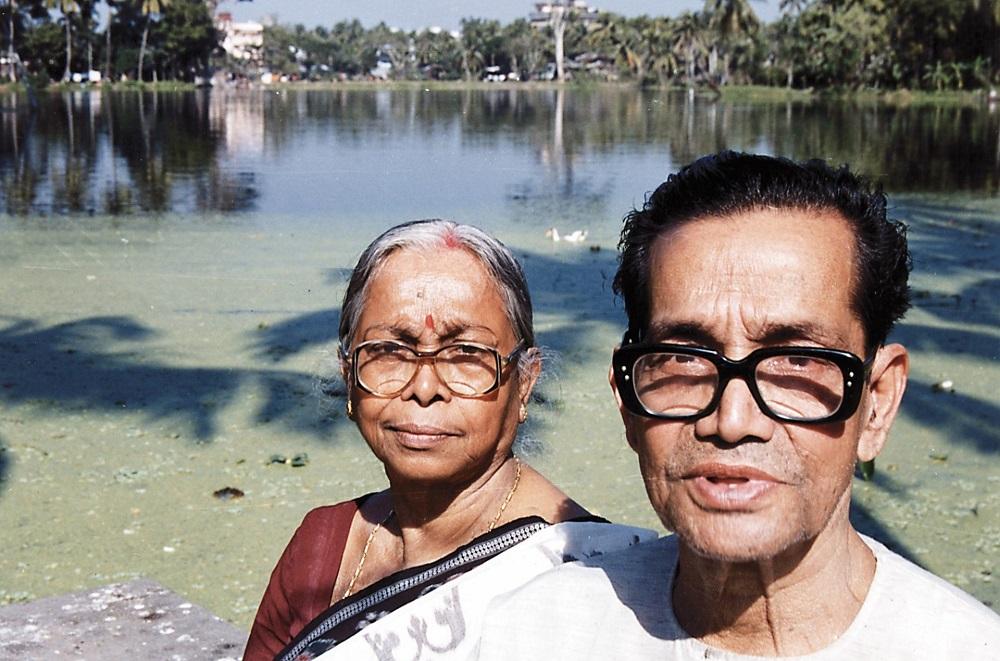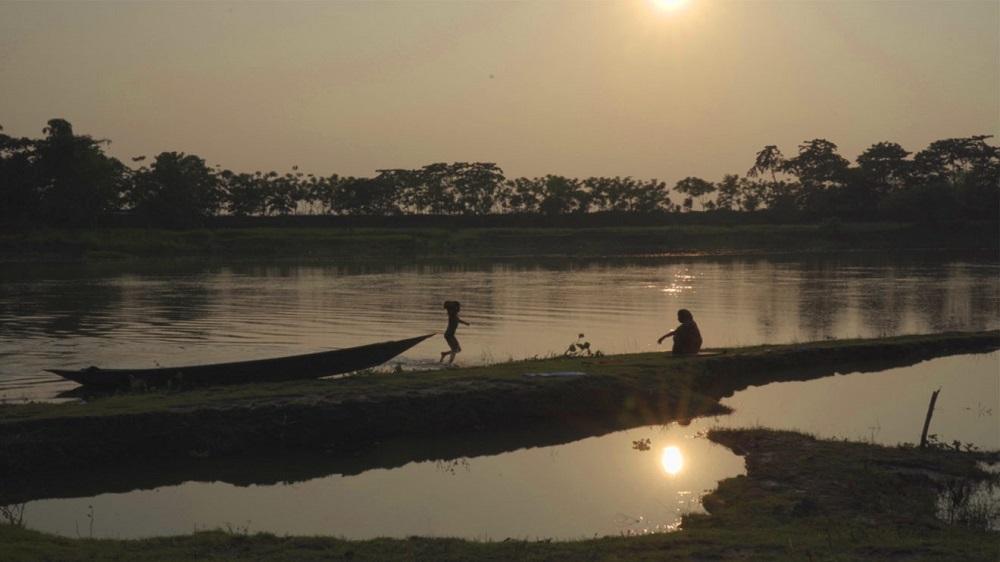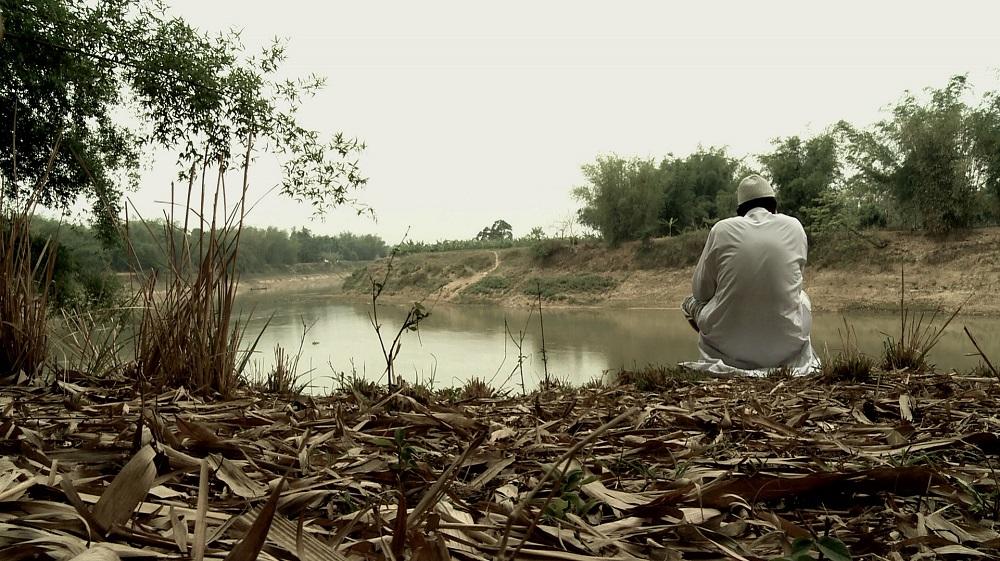Unsettling the Native: Documentary Films on Political Violence

Sourav Sarangi’s Char… No Man’s Land (2012) revolves around the life of Rubel, a young smuggler shifting contraband between Bangladesh and India.
On 26 November 2021, the Sher-Gil Sundaram Arts Foundation had organised a panel discussion titled "Image & Memory" to bring into focus a series of documentary films that addressed the complex legacies of partition and communal violence in Eastern India. The panel collectively described how the train of events let loose by those foundational moments of traumatic violence led up to our present-day difficulties with the passage of deeply discriminatory laws like the Citizenship (Amendment) Act (2019), which, for the first time in India, sought to legally exclude refugees on the basis of religion. Culminating from the demand for a National Register of Citizens (NRC), the labyrinthine task—of making a legible document that will contain the names of all legal citizens in the country—has already been initiated in states like Assam, with majoritarian parties promising to extend it to other states, especially those situated at border-zones, by the end of this year.

Supriyo Sen’s Way Back Home (2003) follows the filmmaker’s journey with his parents when they revisit their home in present-day Bangladesh. (Image courtesy of the artist.)
The films under discussion were Sourav Sarangi’s Char… The No Man’s Land (2012), Supriyo Sen’s Way Back Home (2003), Subasri Krishnan’s What the Fields Remember (2015) and Devshree Nath’s Noor Islam. The films were curated by Krishnan, who spoke about what motivated her to construct this suggestive genealogical map of our various political crises. Although they are all documentary films, they differ in many ways due to their methods of inquiry. Some directors preferred embedded observations of a singularly complex location over many years, like Sarangi; while others preferred exploratory, even meditative, methods that implicated their own personal histories that were caught up in these changes, perhaps most resonantly evident in Sen’s film. Krishnan’s film explores the traumatic events of the Nellie Massacre in Assam, which took place in February 1983, shredding the carefully-preserved peace in the region for the generations to come. Recalling her early life in Assam, where a general silence prevailed over the brutal killings, this emphasis brings forth another vexed idea that is frequently put under scrutiny—that of memory as a plastic object, subject to manipulation as much by trauma as by political formations of community. Krishnan titled her curatorial project as Facing History and Ourselves, focusing on the role played by active, human encounters, where the face of an Other becomes the first provocation for egalitarian community-thinking. She spoke about her interest in what unfolded after civil society interventions in political crises, including those made by image-makers or documentary filmmakers; drawing a line through these films’ ideas of citizenship as a constantly shifting norm of needs and actions, instead of a static, eternal identity.

Devshree Nath’s degree film Noor Islam (2019), follows the fate of a man struggling to prove his citizenship, in the wake of the demands for a new National Register of Citizens (NRC). (Image courtesy of the artist.)
Even though the films were made at different times, at different places and with a variety of agendas in mind, they are given a sense of clarity and direction with her curatorial choices. The moderator for the session, Surabhi Sharma, a documentary filmmaker herself, pointed out several other rich connecting strands between these films. The everyday nature of memory intrudes as a difficult object of appropriation in most of them: these cleave to natural details, like the taste of fruit, consumed in one’s youth in a different country; the moods of a capricious river that swallows up borders; the eruption of personal effects like photographs that attempt to write a counter-imagination of the standard nationalist efforts in territorial thinking. Sarangi’s film Char, for instance, was singled out for following the precarious life of a young smuggler on the borders between India and Bangladesh, while Sen’s film was picked for its investment in ordinary, personal memories as a troubling but affective way of reflecting on these questions. Nath’s film was seen as a more immediate report, like a journalistic piece, on the lives of those forced to do the bureaucratic, and now much-policed rounds, of the NRC authorities to confirm their countries of origin. Towards the end of the discussion, there was the suggestion that a new agential force, aside from religious or state interventions, must be examined afresh as an equal participant in these histories: the force of nature itself—especially as it describes the Bengal delta, whose changing faces are observed closely in all the films.

Subasri Krishnan’s What the Fields Remember (2015), revisits the Nellie Massacre that took place in Assam. (Image courtesy of the artist.)
The films, taken together, serve as a way of reclaiming these pasts and their difficult legacies. Sharma emphasised that their focus on ordinary events, even in the context of such a violent past as documented by Krishnan, allowed the films to assume a more ambiguous shape of intervention—one that is more fitting for a rounded work of art, rather than a piece of polemic. Thus, the films cannot easily be slotted into programmatic efforts of civil society critique—such as gathering compelling legal arguments, or offering a perfectly objective historical rendering of events. However, it is entirely due to their ambivalent, even eccentric ways of getting from one difficult point to another, through the route of extremely crooked lines, that keep these films alive as objects of debate and discussion.




